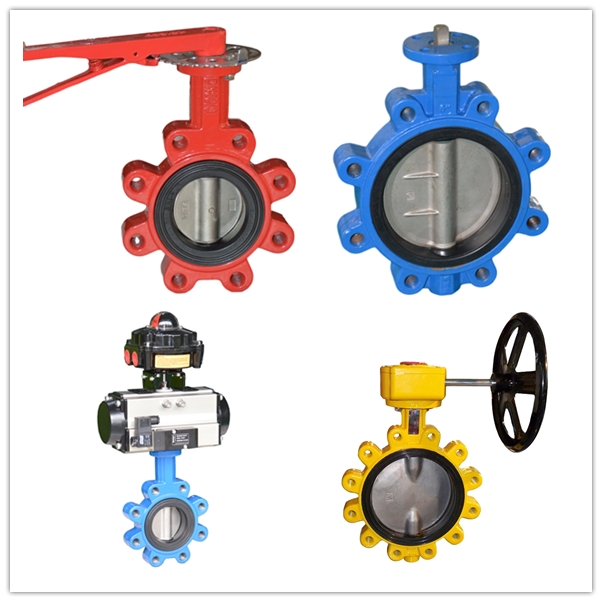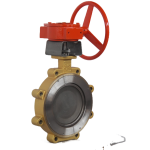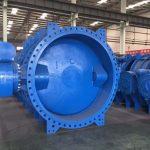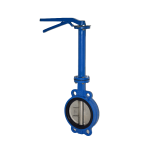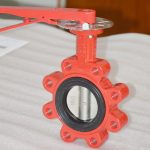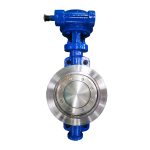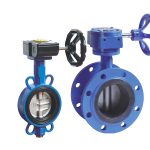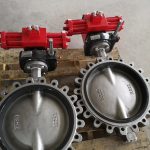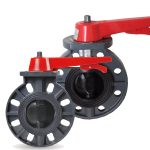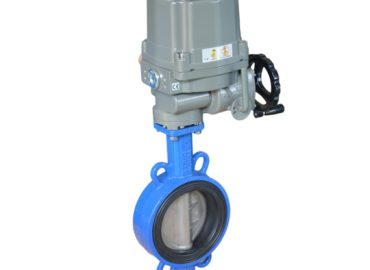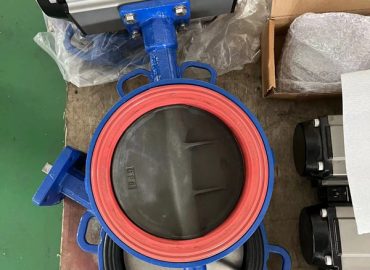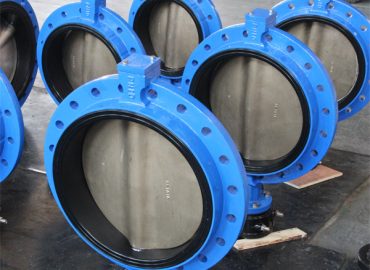Butterfly valves play a critical role in regulating fluid flow in industrial settings. Among the different types of butterfly valves, double acting butterfly valves have gained widespread popularity due to their ability to provide precise flow regulation and fail-safe operation. They are used in a variety of applications ranging from water and chemical processing to food and beverage manufacturing. This article will explore the benefits of using a double acting butterfly valve, including improved control and flexibility, enhanced safety, reduced maintenance, and increased efficiency. By examining these benefits, readers can gain a better understanding of why double acting butterfly valves have become a popular choice for fluid control in a wide range of industrial applications.
Introduction
Double acting butterfly valves offer several benefits to industrial settings. Firstly, they increase control and flexibility through the use of an actuator system, which can regulate the flow of fluids more precisely. Secondly, they can improve safety by preventing accidents within a system, thanks to fail-safe designs that add an extra layer of protection. Thirdly, they can reduce maintenance costs by increasing the lifespan of a system and resisting wear and tear through the use of low-friction materials. Finally, they can increase system efficiency by reducing energy consumption and optimizing performance. The benefits of using a double acting butterfly valve make them a practical and reliable solution in industrial settings where precise fluid control and safety are essential.
Definition of the double acting butterfly valve
A pneumatic butterfly valve is a type of valve that can control the flow of liquid through a pipe. It has a circular disc or plate which rotates around its axis. When the disc is perpendicular to the direction of flow, it restricts the flow and when it is parallel to the flow, it allows the liquid to pass through freely. A double acting butterfly valve has two actuators which work in opposite directions. These actuators control the movement and position of the disc. With its simple design and quick opening and closing speed, the double acting butterfly valve is commonly used in a wide range of industries, including oil and gas, chemical, and water treatment.
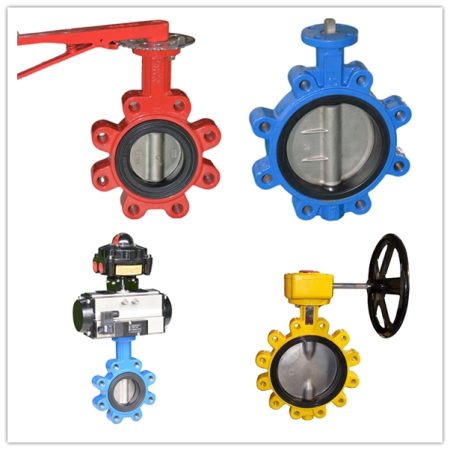
Importance of butterfly valves in industrial settings
Wafer butterfly valves are an essential component in industrial settings due to their versatility and ease of use. These valves can control the flow of fluids in pipes with a quick and accurate response time. In addition, butterfly valves are lightweight, compact, and easy to install, making them a popular choice for various industries. They work well in environments with high-pressure fluid flows, and their low frictional loss makes them energy efficient. Moreover, butterfly valves are easy to maintain and repair, reducing downtime and minimizing costs. All these factors make butterfly valves an integral part of various industrial processes, including water treatment, power generation, and oil and gas production. Their ability to withstand harsh environmental conditions and maintain precise control over fluid flows has cemented their importance in modern industry.
Purpose of the article: to discuss the benefits of using a double acting butterfly valve
The purpose of this article is to explore the benefits of using a double acting butterfly valve in various industrial settings. This type of valve is a popular choice due to its versatility, ease of use, and quick response time. The article will highlight how a double acting butterfly valve works, its features, and the benefits of using it over other types of valves. The article will also examine its application in industries such as water treatment, oil and gas, and chemical processing. By discussing the benefits of using a double acting butterfly valve, readers will gain a deeper understanding of how this valve can improve their industrial processes while minimizing costs and ensuring effective control of fluid flows.
Double Acting Butterfly Valve: Definition
A double acting butterfly valve refers to a type of valve that uses a round disc as a closure member, which rotates 90 degrees to either open or close the flow path. This valve operates using air pressure, where air is both supplied and exhausted to control the valve position. The actuator of the valve is designed with a piston on either side which allows air pressure to push or pull the disc in either direction, providing double the control and ensuring reliable operation. This type of valve is commonly used in industrial applications where precise flow control, tight shutoff, and easy automation are required.
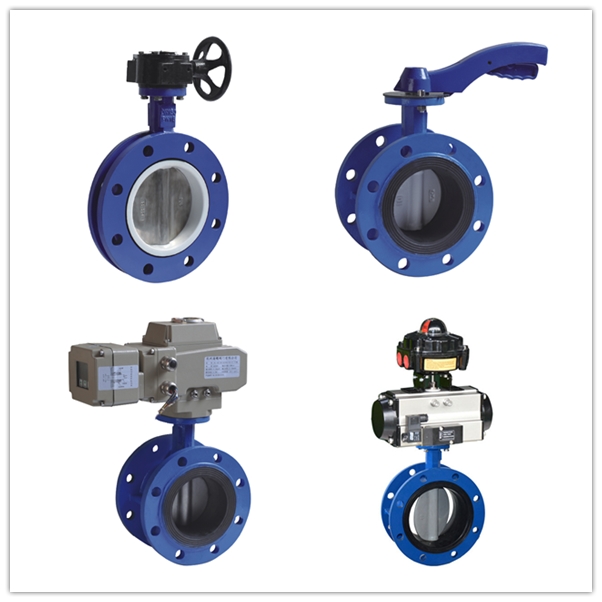
How does the double acting butterfly valve work?
A double acting butterfly valve works by using an actuator to control the position of a circular disc that is used to regulate the flow of fluid within a pipeline. The actuator is typically powered by compressed air or other gases, and it uses a piston to push or pull the disc in either direction. When the actuator receives a signal to open the valve, compressed air is delivered to one side of the piston, pushing the disc out of the way and allowing fluid to pass through the pipeline. Similarly, when the actuator receives a signal to close the valve, compressed air is delivered to the other side of the piston, pulling the disc back into place and blocking the flow of fluid. This type of valve is known for its quick response time, precise flow control, and easy automation, which makes it a popular choice in a wide range of industrial applications.
Types of double acting butterfly valves
There are various types of double-acting butterfly valves available in the market, each designed to serve specific purposes. High-performance butterfly valves feature metal seats and specially designed discs for high-pressure and temperature applications. Sanitary butterfly valves are specifically designed to meet the needs of the food and pharmaceutical industries, with a completely hygienic design and FDA-approved elastomers. Triple offset butterfly valves are used in critical applications where bubble-tight shut-off is required, while resilient-seated butterfly valves are preferred in applications requiring a less perfect seal. The choice of butterfly valve generally depends on the specific requirements of the application, including pressure, temperature, flow rate, and media type.
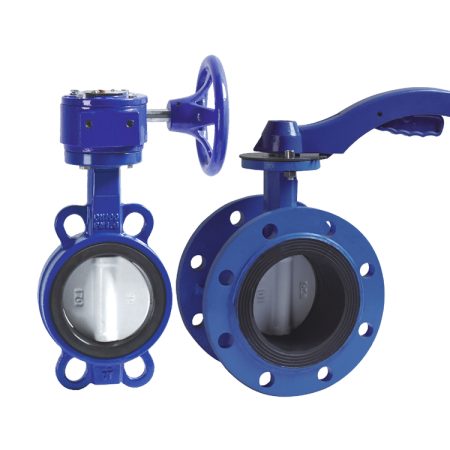
Applications of double acting butterfly valves
Double acting butterfly valves are used in a wide range of industrial applications, including chemical processing, oil and gas, water treatment, HVAC systems, and power generation. They are particularly well-suited for applications requiring precise flow control, easy automation, and quick response times. These valves can be found in pipelines, tanks, and other flow control systems, and they are often used to regulate the flow of gases, liquids, and slurries. Their ability to operate in a variety of pressure and temperature conditions, combined with their durability and ease of maintenance, makes them a popular choice for many industrial applications.
Benefits of Using Double Acting Butterfly Valves
There are several benefits to using double acting butterfly valves in industrial applications. Firstly, they offer precise flow control, enabling operators to adjust the flow rate as required. Secondly, they are highly automated, meaning that they can be controlled remotely and adjusted as needed with minimal human intervention. Thirdly, they have a quick response time, which ensures that flow changes are executed rapidly and efficiently. Fourthly, they are durable and can withstand significant wear and tear, making them a reliable choice for long-term use. Lastly, they are relatively low-cost, making them a cost-effective option for many applications. Overall, the benefits of using double acting butterfly valves enhance the operational efficiency of an industrial process resulting in increased productivity and reduced downtime.
Increased control and flexibility
The use of double acting butterfly valves enhances the level of control and flexibility in industrial operations. This is because they can regulate and adjust flow rates precisely, allowing for better management of the production process. They also allow for quick and easy adjustments, enabling operators to make changes on the fly, which can help optimize the process and improve overall efficiency. Additionally, the automation of these valves reduces the need for manual adjustments, freeing up personnel to focus on other tasks. The ability to automate the flow control process also helps prevent damage to equipment or products caused by human error. Overall, the increased control and flexibility provided by double acting butterfly valves ultimately contributes to greater operational efficiency and cost savings.
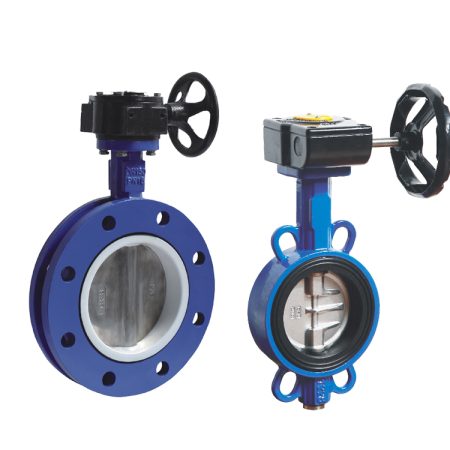
Improved safety
Using double acting butterfly valves can significantly improve safety in industrial operations. These valves are designed to provide reliable and secure flow control, which helps prevent incidents such as spills or leaks. They are also able to stop the flow of fluids quickly in case of an emergency, reducing the risk of damage to equipment or injury to personnel. Additionally, the use of automated valves reduces the risk of accidents caused by human error, as they are not subject to the same kind of mistakes as manual valves. Their design also prevents backflow and reduces the risk of contamination, which can be essential in industries such as pharmaceuticals, food processing, and water treatment. Overall, improved safety is a critical benefit that can help protect personnel, equipment, and the environment.
Reduced maintenance
The use of double acting butterfly valves can result in reduced maintenance requirements, providing enhanced operational efficiency and cost savings. These valves are designed for high reliability and can withstand significant wear and tear, resulting in a longer service life and less frequent replacement. Additionally, the automation of flow control reduces the need for manual adjustments, which can reduce wear and tear on the valve and prolong its lifespan. As a result, this can lead to lower maintenance costs, decreased downtime, and improved return on investment. The simple design of butterfly valves also makes them easy to maintain and repair when required, with many components interchangeable, further reducing maintenance needs. Overall, the reduced maintenance requirements associated with double acting butterfly valves make them a popular choice for many industries, helping to streamline operations and reduce costs.
Increased efficiency
Using double acting butterfly valves can result in increased efficiency in industrial operations. These valves allow for precise flow control, which helps to optimize production processes and reduce waste. The automation of flow control also enables operators to make quick and accurate adjustments, improving the overall speed and efficiency of the production process. Additionally, the reduction in maintenance requirements means that less time and resources are required for upkeep, allowing operators to focus more on production. The durability and reliability of these valves also reduce the risk of unplanned downtime, further contributing to increased efficiency. Overall, the use of double acting butterfly valves in industrial operations can result in enhanced productivity, reduced waste, and cost savings, making them a popular choice for many manufacturing processes.
Conclusion
In conclusion, the benefits of using a double acting butterfly valve in industrial processes cannot be overstated. These valves offer precise flow control, automation, quick response times, durability, and cost-effectiveness. Their use can significantly improve operational efficiency, leading to increased productivity, reduced waste, and cost savings.
Furthermore, these valves increase safety in industrial environments, by reducing the risk of spills, leaks, and contamination, and preventing damage to equipment and injury to personnel. With the ability to automate the flow control process, the risk of accidents caused by human error is significantly reduced.
In terms of maintenance, the simple design of double acting butterfly valves makes them easy to maintain and repair, while their durability reduces the frequency of maintenance and replacement, resulting in lower overall maintenance costs for companies.
Overall, the use of double acting butterfly valves brings numerous benefits to industrial operations, including increased control and flexibility, improved safety, reduced maintenance requirements, and increased efficiency. With their ability to regulate flow rates precisely, automate the process, and ensure safety and durability, double acting butterfly valves offer an essential tool for a wide range of applications.
Recap of the benefits of using a double acting butterfly valve
To recap, using a double acting butterfly valve provides many benefits in industrial applications. These include precise flow control, automation, quick response times, durability, cost-effectiveness, increased safety, reduced maintenance, and increased efficiency. Double acting butterfly valves are versatile and adaptable, making them appropriate for a variety of industries and application scenarios. They allow operators to make quick and easy adjustments on the fly, which can improve process optimization, increase productivity, and reduce waste. The enhanced control and flexibility that these valves provide, together with their ability to prevent accidents and reduce maintenance needs, make them an attractive investment for businesses seeking to improve their industrial operations.
Final thoughts on the importance of selecting the right valve for industrial settings
In an industrial setting, selecting the right pneumatic valve is critical to ensuring the safe and efficient operation of the process. The selection of the right valve depends on various factors, including media type, pressure, temperature, flow rate, and specific application requirements. Using the right valve, such as a double-acting butterfly valve, can result in significant benefits, including increased control, reduced maintenance, enhanced safety, and increased efficiency. It’s important to work with knowledgeable professionals who understand the unique needs of industrial applications and can recommend and install the most appropriate valve solutions. By selecting the right valve, industrial operators can achieve optimal performance, greater reliability, and improved cost savings, which in turn can help businesses become more competitive and successful.
Encouragement to seek expert guidance for valve selection and design
In light of the critical role that valve selection and design play in industrial applications, it’s essential to seek expert guidance to make informed choices. Industrial applications require precise solutions because of their complex nature, making it difficult to select the correct valve type. The consultation of an experienced engineer or technical specialist can help businesses ensure that the valve selected meets the specific needs of their application. A qualified professional can advise on the optimal valve type, size, materials, and design features to achieve optimal performance, safety, and efficiency from either a butterfly valve or another type of valve. By seeking expert guidance in selecting and designing valves, industrial operators can enjoy long-term reliability, efficiency and prevention of downtime of their processes.


